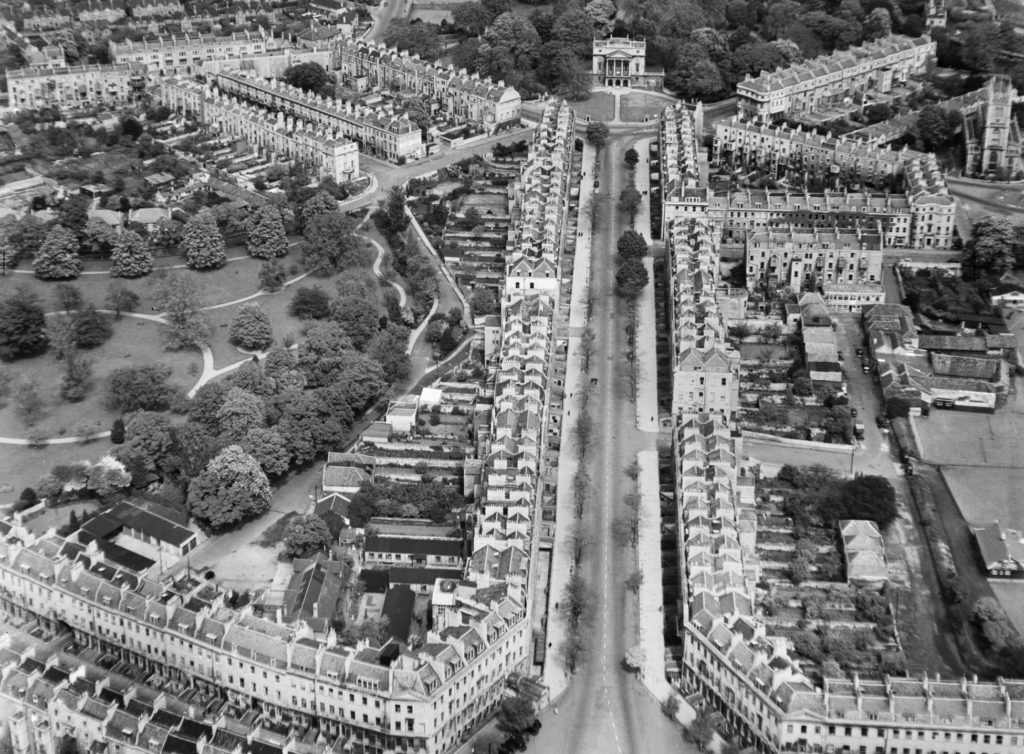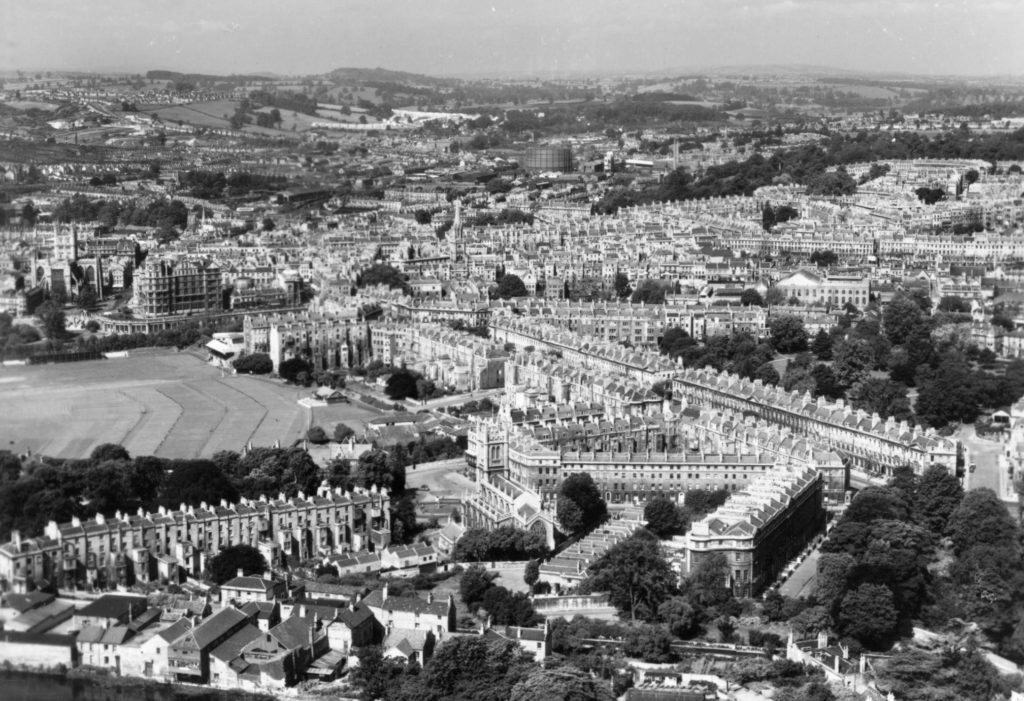
The Bathwick Estate, more commonly referred to as the Pulteney Estate was planned as a spectacular Georgian New Town for Bath. It lies to the east of the river, connected to Bath by the iconic Pulteney Bridge. Commissioned by Sir William Pulteney, it was largely designed by the architect Thomas Baldwin and mostly built between 1788 and 1792.
Great Pulteney Street is Baths grandest boulevard at over 1,000 feet (300m) long and 100 feet (30m) wide The architect only constructed the façade though – developers acquired plots and built the actual structures behind. This means that, although obviously similar, many of the properties have different internal features, and some houses were joined to form hotels. The whole street is raised on a series of vaults up to seven metres above ground level to protect the houses from flooding.
Off this impressive boulevard, grand streets and squares were planned, most of which were named after members of the Pulteney family. However, building slowed after the banking crisis of the 1790s and all but stopped when the Napoleonic wars started. Evidence of this abrupt halt in building can be seen in the truncated Sunderland Street which originally was planned to lead to the (never built) Francis Square, now Henrietta Park. Being only one house deep Sunderland Street claims the title of the shortest street in Bath. Other evidence can be seen in the iconic end of Johnstone Street which would have led to a grand estate planned for what is now "The Rec".
Despite never being finished, The Great Pulteney estate remains one of the most famous landmarks in Bath. This is recognised by Heritage England as most of the houses on Great Pulteney Street are Grade 1 listed.
At the far end of Great Pulteney Street stands the impressive Holburne Museum. This was originally built as the Sydney Hotel and featured at its rear a Georgian pleasure gardens - now Sydney Gardens. Opposite the gardens lay Sydney Place, where Jane Austen lived between 1801-1803. Many references to the area can be found in her books Northanger Abbey and Persuasion.
At the opposite end of Great Pulteney Street can be found Laura Place. The fountain at Laura Place was not part of the original plan. After the completion of the main street local residents petitioned and successfully raised funds to build a grand column (rather like Nelson's Column in London). However as construction of the column started, the residents realised that the addition would tower over the area, so they then petitioned for it to be cancelled. It was only many years later in 1877 that another campaign lead to the installation of the fountain.
The road from Laura Place, Argyll Street leads to the famous Pulteney Bridge built over the river Avon in 1774 by Robert Adams. This is the end (or beginning) of the Georgian Bathwick development. Over the river lies the ancient city of Bath.
Sunderland Street, a side street off Great Pulteney Street, is the shortest street in Bath, with only one address.
Great Pulteney Street was commissioned by Sir William Pulteney, it was designed by the architect Thomas Baldwin and completed in 1792.
Henrietta Park opened to celebrate the Diamond Jubilee of Queen Victoria of 1897

